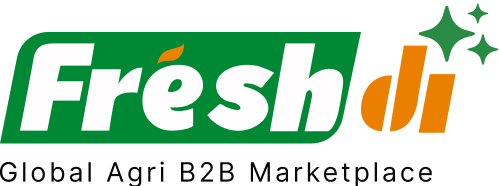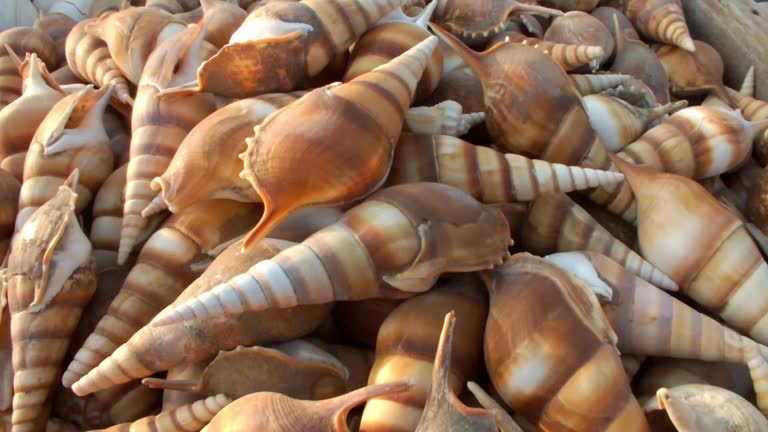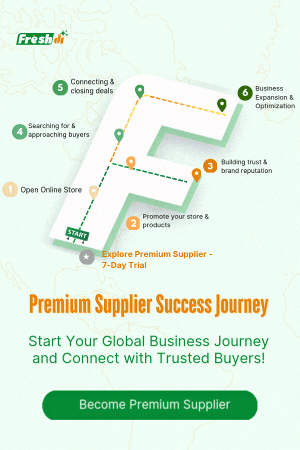Introduction – France’s Seashells Market in Statistical Focus
France has long held a prominent spot in the global seashells market, especially when it comes to delicacies like oysters and edible snails. With a coastline that stretches from the Atlantic Ocean to the Mediterranean Sea, it’s no surprise that France has capitalized on its marine resources. In 2023 alone, the country exported oysters worth a staggering $145.7 million. That’s not just a number—it’s a reflection of France’s deep-rooted expertise and infrastructure in shellfish farming and trade.
But here’s the deal—buyer success in this market doesn’t just come from knowing the stats. It boils down to choosing the right suppliers backed by data. In 2025, businesses that rely on platforms like Freshdi for real-time insights, supplier credibility, and demand trends are more likely to thrive.
Let’s dive deeper into the numbers and see what’s shaping France’s seashell export landscape.
Deep Dive – Key Production, Export Statistics & Market Signals
When we talk about seashells in France, we’re mostly referring to oysters and edible snails. Both have unique market dynamics and export behaviors.
Oyster Industry: A Powerhouse with Hiccups
- In 2023, France exported oysters valued at $145.7 million.
- Top export destinations:
- Italy ($41.6 million)
- Spain ($16 million)
- China ($14.6 million)
- Netherlands ($14.1 million)
- Hong Kong ($10.3 million)
However, 2024 threw a curveball. Norovirus outbreaks in Normandy—responsible for 25% of oyster production—led to bans and a projected 20–30% drop in consumption. That’s a big dent in what’s usually a festive season cash cow. Some farms even faced bankruptcy or were forced into receivership.
China’s Appetite Shrinks
French oyster exports to China dropped sharply in 2024:
– From 1,240 metric tons in 2023 to 909 metric tons in 2024.
– China’s total oyster imports also declined from 2,090 to 1,570 metric tons.
This is a red flag for exporters relying heavily on Asian markets.
Snail Industry: Import-Heavy, Still Lucrative
Interestingly, France imports more snails than it exports.
– 2024 Imports: 1.7 thousand tons
– Value: $23 million (a 3% decline from 2023)
– Top suppliers:
– Turkey (524 tons)
– Lithuania (303 tons)
– Czech Republic (173 tons)
This means there’s a growing opportunity for local producers to fill demand gaps.
Shellfish Outlook – A Cautious Climb
- Exports expected to hit $87 million by 2026, up from $80 million in 2021.
- Imports projected to reach $272 million by 2026, from $264 million in 2021.
These modest growth rates show a stable, if not aggressive, market trajectory.
Consumer Trends – What’s on the Plate?
French consumers are eating about 33 kg of seafood per person annually. With a national seafood market valued at €7 billion, seashells remain a key player. Health-conscious choices and sustainability concerns are steering people away from red meat and toward seafood.
Freshdi’s RFQ (Request for Quotation) data also reveals a consistent demand for certified, sustainably sourced seashells. Buyers are increasingly filtering suppliers based on traceability and eco-labels.
Top 6 Verified Seashells Suppliers in France – Top Tier Based on Export Data
Now, let’s get to the heart of it—who are the top seashell suppliers in France in 2025?
These names aren’t based on guesswork. They’re backed by export numbers, buyer reviews, and verification on Freshdi.
1. Alienor Brizec
- Location: Brittany, France
- Specialty: Oysters and mussels
- Export Reach: Italy, Spain, Germany
- Certifications: IFS Food, MSC Certified
- Why They Stand Out: Known for consistent quality and fast logistics. Buyers praise their freshness and traceability.
2. Monsieur Lucien Mallet
- Location: Normandy
- Specialty: Normandy oysters
- Export Reach: China, Netherlands, UK
- Certifications: Organic Agriculture Label
- Why They Stand Out: Despite challenges in 2024, this supplier maintained strict hygiene and rapid recovery post-norovirus crisis.
3. La Perle de l’Atlantique
- Location: Charente-Maritime
- Specialty: Wild and farmed oysters
- Export Reach: Middle East, Italy
- Certifications: ISO 22000
- Why They Stand Out: Known for large-volume exports and high-end packaging preferences for luxury markets.
4. Escargots de Bourgogne
- Location: Burgundy
- Specialty: Edible snails (Helix pomatia)
- Export Reach: Germany, Switzerland, Canada
- Certifications: PGI, HACCP
- Why They Stand Out: Heritage-based production with a strong reputation in gourmet markets.
5. Coquillages du Sud
- Location: Occitanie
- Specialty: Mediterranean clams and cockles
- Export Reach: Belgium, Italy
- Certifications: Friend of the Sea
- Why They Stand Out: Sustainability-first approach with strong seasonal supply programs.
6. Maison Lemoine
- Location: Loire-Atlantique
- Specialty: Small-scale boutique oysters
- Export Reach: Japan, Hong Kong
- Certifications: ISO 9001
- Why They Stand Out: Focus on premium quality over quantity, ideal for niche markets.
Dynamic Ranking Note
Supplier positions can shift based on export volumes, certifications earned, and buyer feedback. Platforms like Freshdi regularly highlight “Suppliers of the Month/Quarter,” giving buyers updated signals about who’s leading the pack.
Market Navigation – Statistical Trends, Pricing Analysis & Export Dynamics
Understanding market dynamics helps buyers make smart choices—not just based on who’s trending now, but who will still be reliable next quarter.
Demand Trends
Based on RFQ data from Freshdi, demand spikes for oysters between November and January due to holiday consumption. Summer months also see a surge due to tourism-driven retail.
Snail demand tends to pick up around gourmet food expos and holiday gifting seasons.
Pricing Fluctuations
Oysters:
– Peak Price Months: December – January
– Low Price Months: July – August (due to overstock and spawning season)
Snails:
– Prices remain relatively stable but see minor hikes during festive seasons.
Strategic Purchasing Tip
Smart buyers lock in supply contracts before the price peaks. Historical data from Freshdi’s trade analytics shows that pre-ordering in early fall can save up to 15–20% on wholesale oyster prices.
Conclusion – Leveraging Data for Optimized Supply Chains
France remains a heavyweight in the global seashells market, with oysters and snails leading the charge. While the industry faced some turbulence in 2024, the fundamentals remain strong. Exporters are resilient, and consumer demand is steady.
Buyer’s Checklist: What to Look For in a Seashell Supplier
- ✅ Verified export data and certifications
- ✅ Positive buyer reviews on platforms like Freshdi
- ✅ Ability to handle volume and seasonal fluctuations
- ✅ Sustainable and traceable sourcing practices
- ✅ Transparent pricing and RFQ responsiveness
Future Outlook
With moderate growth projected through 2026 and consistent consumer interest in seafood, France’s seashell industry is poised for long-term stability. Innovations in aquaculture, rising health awareness, and digital platforms will be the key catalysts.
How Freshdi Helps Buyers Win
- 🌐 Access to verified suppliers with export-ready profiles
- 📊 Real-time market intelligence and RFQ trends
- 🔎 Deep-dive supplier analytics and performance history
- 🛠️ Tools for contracting, negotiation, and documentation
If you’re looking to build a reliable seashell supply chain in France, Freshdi is your go-to command center.
References
- World Bank – Oyster Exports
- Tridge – Oyster Industry Challenges
- Seafood Source – China’s Oyster Imports
- IndexBox – Snail Imports
- Report Linker – Shellfish Market Outlook
- SIAL Paris – Seafood Trends
FAQs
1. What types of seashells are most commonly exported from France?
Primarily oysters and edible snails. Oysters dominate the export market, while snails are often imported for domestic consumption.
2. Are French seashell suppliers certified for sustainability?
Yes, many top suppliers have certifications like MSC, ISO, and PGI to ensure sustainable and traceable sourcing.
3. How can I verify a supplier’s export history?
Use platforms like Freshdi, which compile export data, buyer feedback, and certifications to help you choose wisely.
4. When is the best time to buy oysters from France?
Early fall (September–October) is ideal for securing lower prices before the holiday demand spike.
5. How does Freshdi support seafood buyers?
By offering verified supplier profiles, trade statistics, RFQ tools, and real-time market trends to make smarter purchasing decisions.


